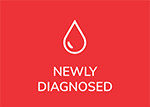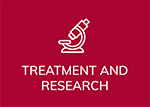It’s been a busy medical week for me.
On Tuesday, January 21, 2020, I drove to beautiful La Jolla, CA for a bone marrow biopsy (BMB) and multiple aspirations that could very much determine my future.
Not only did I have all the routine tests done for monitoring my CLL, I had several extra bone marrow aspirations to gather samples for research purposes at Dr. Kipps’s lab at UCSD and even more to send to the Fred Hutch, Seattle where I had by CAR-T done 22 months earlier. They will search for any lingering CAR-T cells and likely do other research. My marrow is very much in demand.
And one very special aspiration was sucked out my tailbone to mail to Adaptive Biotech. They will perform next generation sequencing using their clonoSEQ testing that can find as few as one in a million CLL cells by looking not for the cells themselves, as flow cytometry does when it scans the cells’ surface markers for the typical clonal pattern seen in CLL, but instead by searching for the CLL’s unique DNA sequencing, its genetic fingerprints.
This test was only approved for payment by Medicare on January 8, so my timing was good.
No, they did not aspirate out all my marrow- I have plenty left. Even in my poor bruised left posterior superior iliac spine where they did the biopsy.
Yes, you lie prone with your pants and undies hiked down exposing the easily accessed marrow of the pelvic bones and gluteus muscles and fat overlying over them. You may get the picture, but I am not sharing any images.
Yes, it hurts, but not badly and the first pull is the worst. The next few are milder. Ten cc’s of the numbing agent, lidocaine, helps big time.
No, I did not need to be sedated, though many do and a single acetaminophen after was all I needed for the achy pain later in the day.
No, I couldn’t shower for 24 hours and no swimming for 5 days to play it safe.
And yes, two days later, and it’s healing well.
And yes, Becky, the wonderful nurse who does a super job with the procedure, proudly showed me the long bone core she extracted for the pathologist. I suspect that is not a sharing opportunity she affords her more squeamish patients, but she knows that not much freaks out a doctor.
Now let us spend some time on why this BMB and the NGS sequencing is such a big deal, and on some of the underlying biology.
First a little history.
Before I had my CAR-T therapy almost two years ago, I needed to be staged. This has a different meaning in cancer than it does in a house or a play. It is not setting up to make things look good. It’s knowing where your cancer is and how far it has advanced.
As part of the staging, I had a bone marrow biopsy that showed the CLL had made a significant resurgence in my marrow. From that aspiration that contained many chronic lymphocytic leukemia cells, they found a unique string or sequence of DNA that was only present in the cancer. Adaptive Biotech stores that sequencing information for later reference and future testing.
One month post CAR-T, when I was restaged with yet another BMB (I have had about a dozen over the course of my CLL), they used that DNA sequence as the template to look for any matches.
None were found. YAHOO!
Depending on the number of cells sampled, that could mean my CLL had become undetectable to the level of 1 in 1,000,000.
And that was pretty great news. Here is my original blog post from when I first found out that I was MRD4 in Seattle.
Day 29: The Killing Frenzy is Done- Time to Celebrate Being CLL Free
And I posted this when I got the NGS clonoSEQ results a little later.
News from the Recovery Front: I Got to Admit It’s Getting Better
The language to describe this testing is changing.
It used to be called MRD – or minimal residual disease negative.
Now you are likely to come across U-MRD for undetectable minimal residual disease. That’s more honest and accurate. We really don’t know if there is or isn’t any persistent disease. It is just at such low levels we can’t detect any with our present technology. All we know is we can’t find it.
You might also see U-MRD4 or U-MRD-4 that tells us the testing went to the level on 10-4 or one in 10,000. That is the level that is used in most clinical trial and it is generally assessed by flow cytometry.
Next generation sequencing (NGS) such as clonoSEQ, can report U-MRD6 or U-MRD-6, yes one in a million cells.
Later I will discuss why that is important in CLL in general but for now let me just explain why it’s important in my case.
While there can be a strong correlation between the finding of CLL in the peripheral blood and the bone marrow, the marrow is where any residual CLL cells are most likely to be found and where it’s more difficult to obliterate. And if there are a few nasty, tough to kill rogues left deep in the niches of my bones, they can rise again; my CLL relapse would be very challenging to control.
If that’s the case, it may be critically important to keep my boot heel on the neck of the cancer with continuing my ibrutinib, and maybe add some other methods of attack, some orthogonal treatment to wipe out every last clonal strangler, to kill all the Amalekites.
If it’s negative that doesn’t mean I am cured, but it does raise the question as to what I am treating.
There is either no CLL or so little it could take many, many years to ever return.
The depth of remission, especially with CAR-T and venetoclax based therapies, drives the duration of the response.
If I am UMRD6 then I will likely stop my ibrutinib, my best friend for the last 7 years. If I am not, I will likely up my treatment by adding another drug.
Give up therapy or up therapy.
Possible cure or cure is off the table.
That’s a big deal.
A big pivot one direction or the other.
More on that decision in a later post.
Meanwhile, I will wait for my results, hopefully have an answer in 1 to 2 weeks.
No rest for me after that day.
The day after my BMB, I went for my every seven week infusion of IVIG (intravenous immunoglobulin) to control my auto-immune destruction of my platelets (ITP), a problem that has now been dormant of more than 7 years, and to boost my impaired immunity as I make no new antibodies post CAR-T because I have no B cells.
My normal B cells may return now that the CAR-T are gone and maybe with them my own self-made immunoglobulins, but that remains to be seen.
At the infusion center, I nearly always get blood work. My blood count (CBC) was basically normal- some smudge cells were seen that almost certainly means nothing when my absolute lymphocyte count is 1.3, my LHD had fallen back into normal range, but the first time ever my BUN (blood urea nitrogen) was a tad high and had been trending up for the last 6 months, suggesting possible early kidney dysfunction.
Reassuringly, my creatinine, another measure or renal function remains stable and normal, my electrolytes are all well balanced and my blood pressure and lipids are all low normal (leading causes of kidney disease), so I am assuming the BUN will turn out to be nada. I get blood tests so often it will be easy to monitor the trend of my renal function.
It’s always something but I will under react to whatever follows. It is a long row to hoe, this CLL, but that’s okay.
Stay strong, we are all in this together.
Brian
















